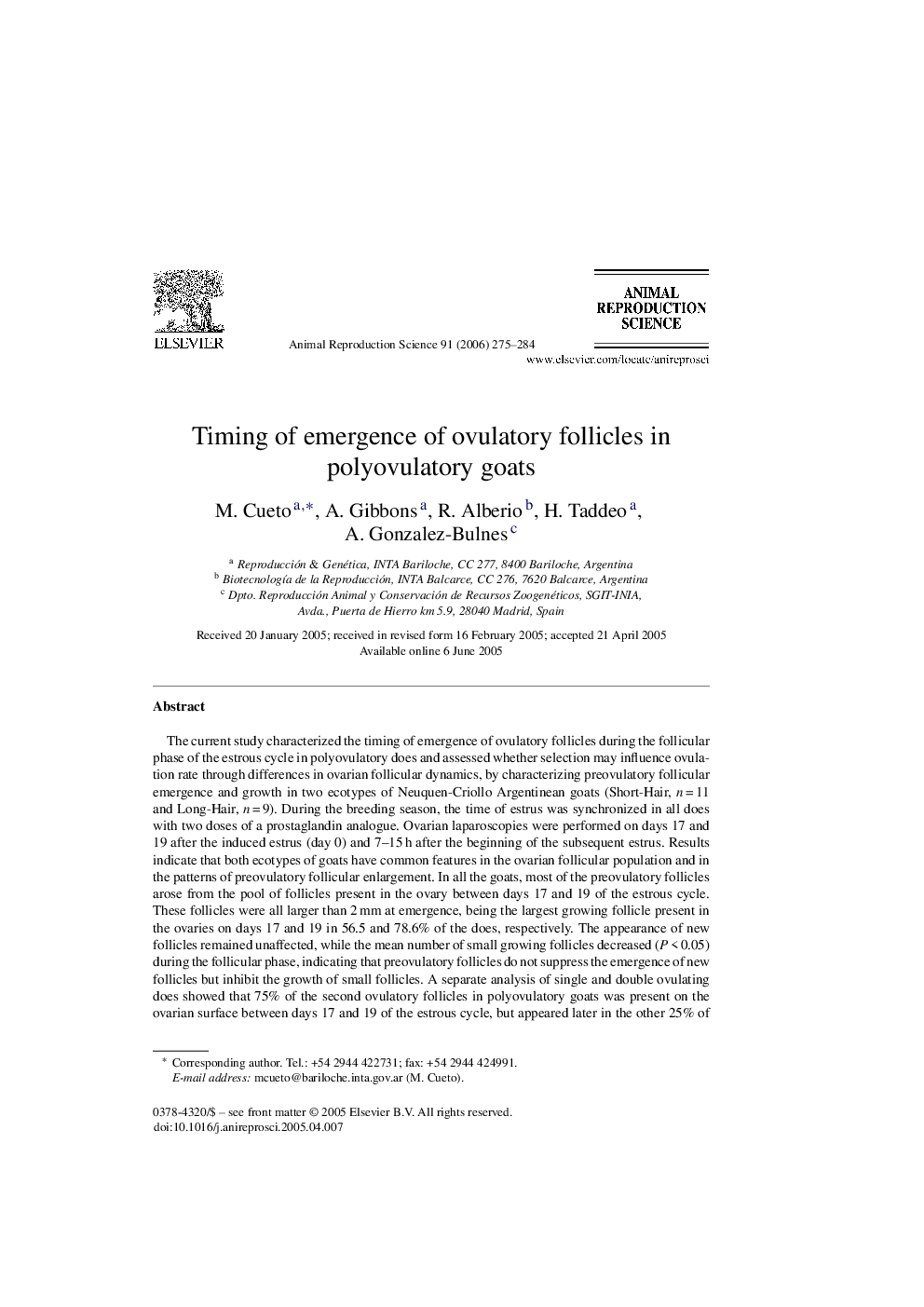| کد مقاله | کد نشریه | سال انتشار | مقاله انگلیسی | نسخه تمام متن |
|---|---|---|---|---|
| 2075057 | 1544832 | 2006 | 10 صفحه PDF | دانلود رایگان |
عنوان انگلیسی مقاله ISI
Timing of emergence of ovulatory follicles in polyovulatory goats
دانلود مقاله + سفارش ترجمه
دانلود مقاله ISI انگلیسی
رایگان برای ایرانیان
کلمات کلیدی
موضوعات مرتبط
علوم زیستی و بیوفناوری
علوم کشاورزی و بیولوژیک
علوم دامی و جانورشناسی
پیش نمایش صفحه اول مقاله

چکیده انگلیسی
The current study characterized the timing of emergence of ovulatory follicles during the follicular phase of the estrous cycle in polyovulatory does and assessed whether selection may influence ovulation rate through differences in ovarian follicular dynamics, by characterizing preovulatory follicular emergence and growth in two ecotypes of Neuquen-Criollo Argentinean goats (Short-Hair, n = 11 and Long-Hair, n = 9). During the breeding season, the time of estrus was synchronized in all does with two doses of a prostaglandin analogue. Ovarian laparoscopies were performed on days 17 and 19 after the induced estrus (day 0) and 7-15 h after the beginning of the subsequent estrus. Results indicate that both ecotypes of goats have common features in the ovarian follicular population and in the patterns of preovulatory follicular enlargement. In all the goats, most of the preovulatory follicles arose from the pool of follicles present in the ovary between days 17 and 19 of the estrous cycle. These follicles were all larger than 2 mm at emergence, being the largest growing follicle present in the ovaries on days 17 and 19 in 56.5 and 78.6% of the does, respectively. The appearance of new follicles remained unaffected, while the mean number of small growing follicles decreased (P < 0.05) during the follicular phase, indicating that preovulatory follicles do not suppress the emergence of new follicles but inhibit the growth of small follicles. A separate analysis of single and double ovulating does showed that 75% of the second ovulatory follicles in polyovulatory goats was present on the ovarian surface between days 17 and 19 of the estrous cycle, but appeared later in the other 25% of the estrous cycles. These findings support the hypothesis that follicular dominance effects are exerted during the preovulatory period, when the growth of follicles other than the ovulatory is inhibited, and that increases in ovulation rate in small ruminants are related to a reduced incidence of follicular atresia and an extended period of ovulatory follicle recruitment.
ناشر
Database: Elsevier - ScienceDirect (ساینس دایرکت)
Journal: Animal Reproduction Science - Volume 91, Issues 3â4, February 2006, Pages 275-284
Journal: Animal Reproduction Science - Volume 91, Issues 3â4, February 2006, Pages 275-284
نویسندگان
M. Cueto, A. Gibbons, R. Alberio, H. Taddeo, A. Gonzalez-Bulnes,